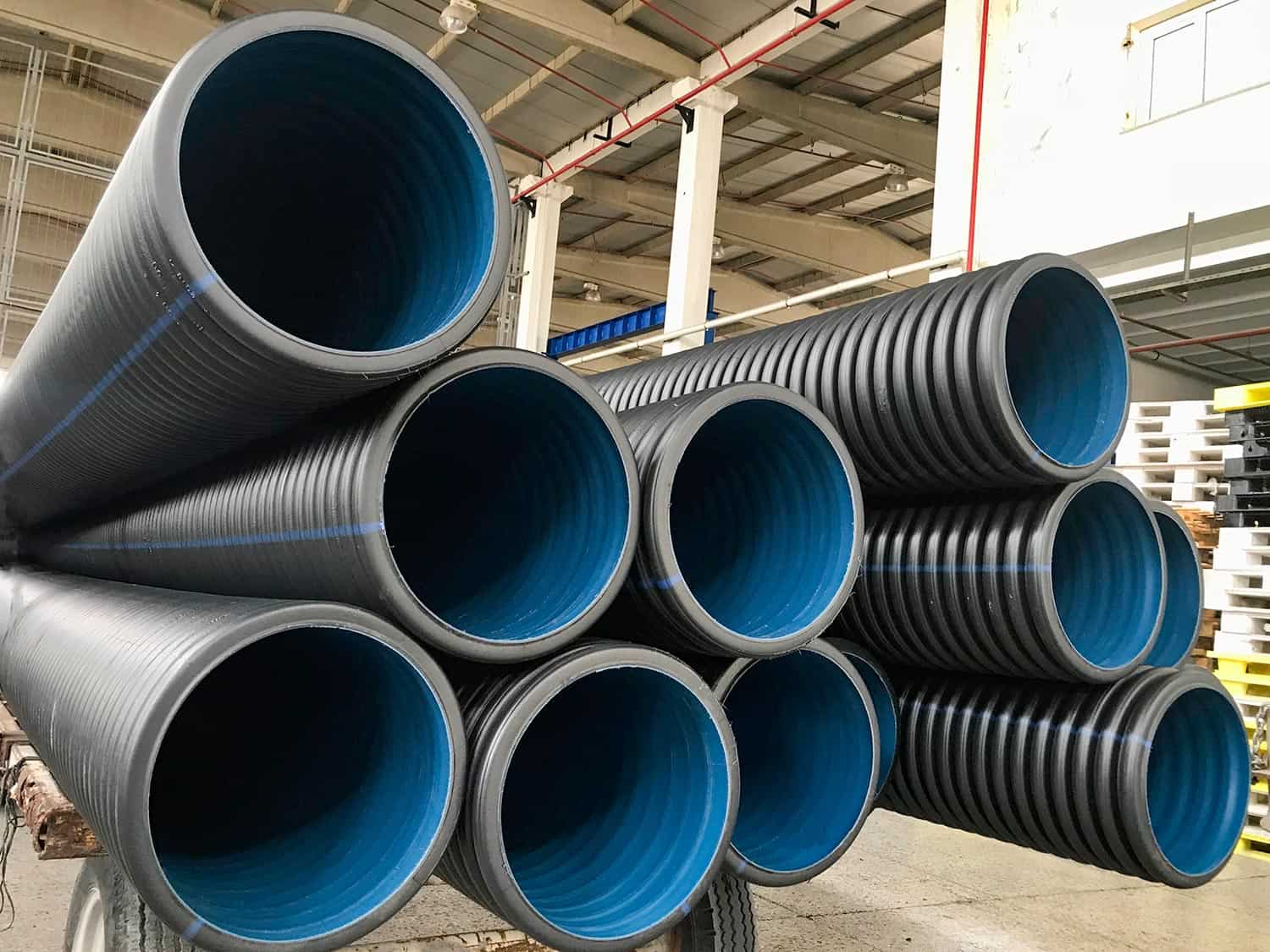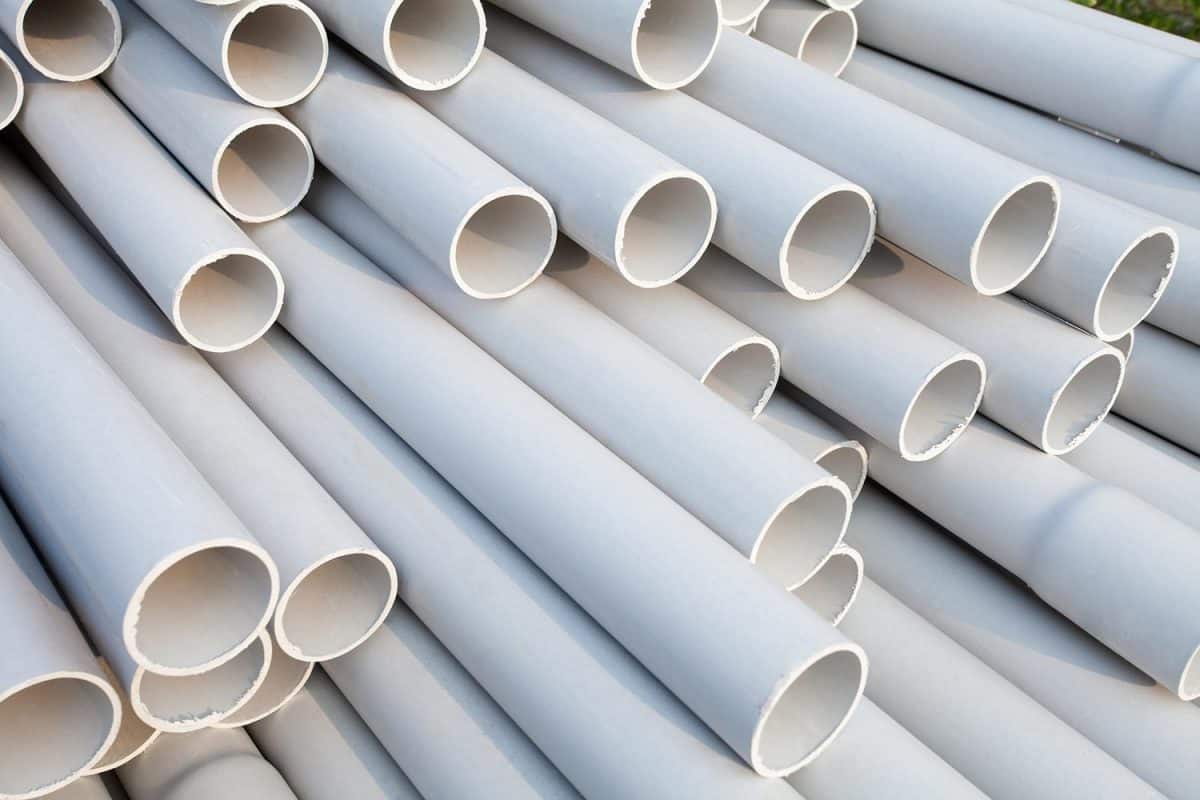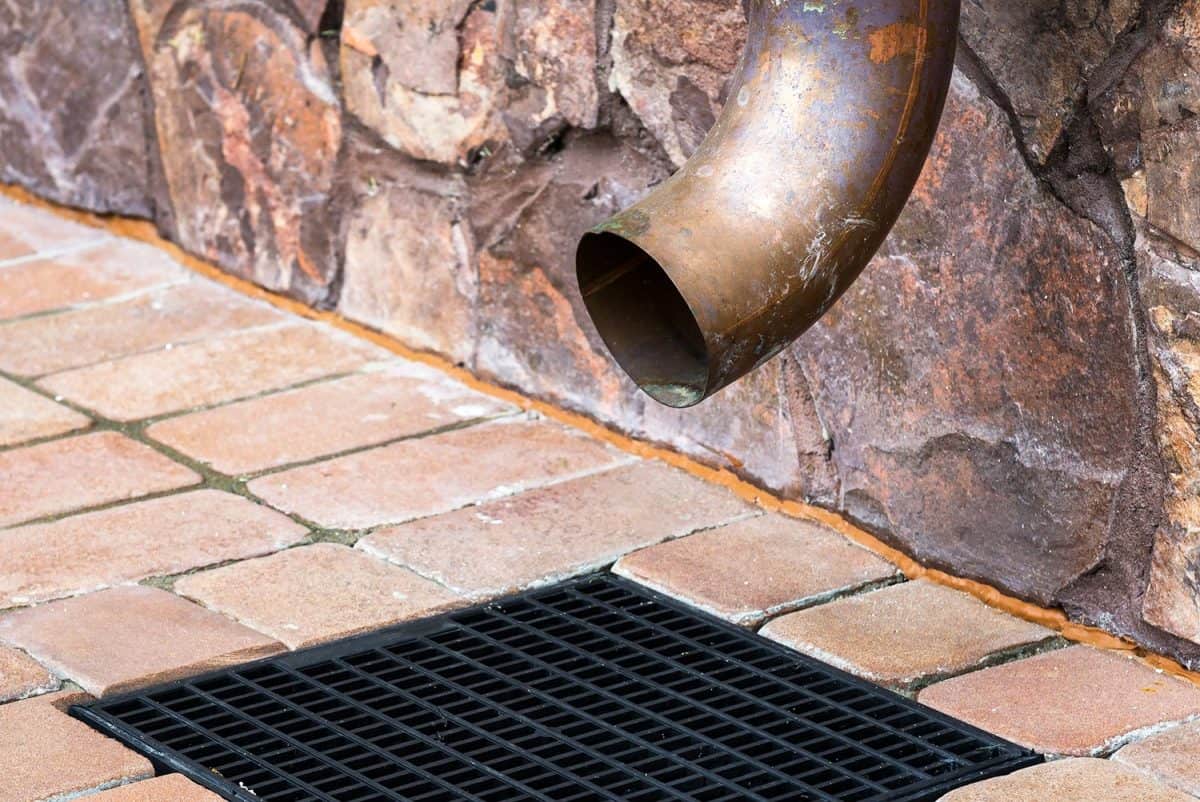Primarily invented in France, the French drains found their way to the US in the 19th century. Over the years, subsurface drainage has evolved, and different materials have been introduced. The French drains have pipes that help increase the volume of water that flows through them. But which pipes are the best for French drains? Here's what the experts have to say in response to this question.
There are two types of pipes that experts recommend using for French drains. You can use smooth-wall PVC or corrugated pipes. These pipes are lightweight, and buyers often purchase them. However, they differ a bit. The corrugated pipes are flexible while the smooth-wall PVC pipes are rigid but durable.
The French drains might be the most important drainage system in your home. Continue reading to see which of the two will be suitable for your home and pocket.
![Drain pipe to the clean water, Best Pipe For French Drains [Here's What Experts Say]](https://uooz.com/wp-content/uploads/2022/02/Best-Pipe-For-French-Drains-Heres-What-Experts-Say-800x1200.png)
Types Of Pipes For French Drains
French drains were popularized in the US by a lawyer, Henry Flagg French. They have since changed. Pipes are now added in the trenches.
The most commonly used French drain pipes are corrugated and PVC. These two have some differences, but they primarily drain underground and surface water efficiently.
Corrugated Pipes

Corrugated pipes have ridges and grooves that add rigidity. Flexibility and strength are the key attributes of these pipes. You'll notice that some corrugated pipes are perforated while others aren't.
Check out this perforated corrugated pipe on Amazon.
PVC Pipes

PVC drain pipes are rigid and smooth. They have perforations that are placed downwards into the ground. PVC drain pipes are very durable.
How To Install A French Drain Pipe
Installing a drain in the yard is a necessity, not a luxury. The goal of the French drain is to get any surface and groundwater as far away as possible from the foundation and basement of your house.
Whichever French pipe you choose, installation is the same. It can be a DIY project as it is easy enough to execute when you have the right equipment.
Equipment & Materials Needed
Ensure that you have the following at hand:
- A corrugated or PVC perforated pipe
- Geotextile or landscape fabric
- Shovel
- Trencher
- Fittings
- Catch basins or inlet grates
Have a look at this catch basin on Amazon.
- Gravel backfill
Procedure
After setting everything and you are ready to start digging, alert the underground service authorities 48 hours prior. They will send professional locators to mark the appropriate places for digging.
Let's begin!
- Determine the slope. The French drain will need a slope of at least 1% to allow proper redirection of the water.
- Start digging with a trencher, then get the correct depth of the trench. A shovel will come in handy when you want to scope the extra dirt out.
- Ensure there's a hole dug for the catch basin. You'll need to lay a geotextile or landscape fabric at the bottom, and on the sides of the trench. The landscape fabric will stop weeds clogging the drain.
- Pour one to two inches of gravel into the trench. The gravel should be compact.
- Place the pipe onto the gravel. The perforations in the pipe should face down for a better and faster discharge. Tighten all connections to the catch basins.
- Test to see that water is correctly being drained. Then cover the pipe with gravel. The work is complete!
Note: A good discharge is necessary and preferably into a storm drain, and not the neighbor's yard!
Here's a video for enthusiastic DIYers:
The Size Of A French Drain Pipe
French drain pipes are responsible for draining water from the yard, and they need to be wide enough to allow a proper flow.
The standard diameter of a French drain pipe is 4 inches. You might find 6 to 8 inches wide French drain pipes in the market. But these larger diameter pipes are suitable for areas with a lot of water.
The length of the pipes will depend on the distance to the nearest storm drain, street, or ditch.
How Much Does It Cost To Install French Drain Pipes?

Underground drainage is advantageous for buildings. As a DIY project, installing French drain pipes will cost you some money.
The cost of installing French pipes is from $500 to $18,000. The installation cost includes:
- Labor
- Pipe per linear foot
- Fittings
- Exterior and perimeter applications
- Interior perimeter applications
Common French Drain Mistakes (What To Avoid)
For safety and convenience, French drains are better than open trenches. If there's anything that could go wrong, it could be one of these several common mistakes that homeowners make when installing French drains:
- Regulations: Let's clarify, when you own a home, local rules and regulations apply. You'll have to familiarize yourself with the zoning regulations. It's a vital step for DIYers.
- Incorrect materials: In a bid to cut costs, you might be tempted to swap materials. It isn't advisable. Use gravel where it calls for it and not ordinary rocks. Gravel acts as a sieve that catches sediments because of its texture.
- Omitting fittings: Each fitting is like a piece to a jigsaw puzzle, and when omitted the puzzle isn't complete. Corrugated pipes for a French drain, need a catch basin. Otherwise, all the debris from the roof will settle in the ridges and grooves, eventually clogging the pipes.
Check out this snap drain tee on Amazon.
- Lack of slope: The slope is very vital for water drainage. Once there's no slope that creates some gravity, the water will be stagnant in the pipes.
- The direction of the water flow: Ensure that you understand the direction of the water flow in your yard. You need the water to flow away from the house and not toward it.
- Downspout routing: When the water goes through a downspout, it should be routed properly. Don't allow the water from the roof to flow to the yard. Install a drain or catch basin connected to the main French drain to drain the water.

- Skipping drain pipe: Originally, French drains didn't have pipes in them. But, as time went on, experts realized that they weren't as efficient without pipes. So, to avoid water pooling in the yard, ensure that you put a pipe in the French drain.
- Misdirected pipe holes: Pipes meant for French drains are perforated. To avoid water taking longer to drain, the holes in the pipe should face down. Gravity will assist in draining the water in the yard faster.
- Trench lining: Many homeowners might skip installing a geotextile fabric. When there's no fabric, weeds might find their way into the holes in the pipes. Clogged drain pipes aren't efficient.
Cleaning And Maintaining A French Drain
In the long run, debris will make your French drain less efficient. However, cleaning a clogged French drain is easy.
Simply use a sewer jetter kit to jet water through the French drain to unclog it. You might have to flush the water through the drain several times. Corrugated pipes get clogged faster than straight PVC pipes.
On the other hand, it will depend on whether your home is located around trees. The leaves could easily clog the French drain.
You can rent a sewer jetter from your local tool rental or purchase it. If you prefer to invest in a sewer jetter, buy it online or at a hardware store.
Here's a sewer jetter kit on Amazon.
Note: French drains can be cleaned once a year or as often as needed.
How Much Does It Cost To Clean a French Drain?
To snake your French drain clean, it will cost you between $45 to $150 per hour. But since it might take more than an hour to clean the French drain thoroughly, a professional house visit may cost you $500.
French Drains Vs. Trench Drains
French drains differ from trench drains. The differences between the two are based on their appearance and functions. For example:
- French drains help drain underground water, but trench drains only divert surface water.
- Trench drains are shallow whilst French drains are deep.
- French drains use perforated pipes, gravel, and landscape fabric. Trenches are just troughs (mostly concrete) with solid covers or grating.
In Closing
Both corrugated and smooth PVC pipes are efficient in French drains. Ensure to use perforated pipes for better water drainage.
Seek professional assistance when installing a French drain in difficult terrains. A proper French drain will keep your basement and the house foundation dry.
Before you go, read through these other posts:
How To Keep Water Away From House Foundations
Can You Run A Well Pump With A Generator? [And What Size Generator Do You Need]




